Does obesity cause cancer? 
Obesity in the U.S. according to research was 42.4% as shown from the Centers for Disease Control and Prevention. More specifically, from 1999–2000 through 2017–2018, the prevalence of obesity increased from 30.5% to 42.4%, and the prevalence of severe obesity increased from 4.7% to 9.2%. Obesity-related conditions include heart disease, stroke, type 2 diabetes and certain types of cancer that are some of the leading causes of preventable, premature death. Other research suggests that in some people with cancer, excessive extra weight may contribute to and cause cancer development and cancer growth. Obesity and cancer are strongly linked. Living with a healthy weight is an essential part of an integrative cancer care plan for both cancer treatment and cancer prevention.
What causes obesity?
Experts suggest that the chief causes of obesity are a sedentary lifestyle with physical inactivity and a poor diet. Exercise for Cancer and Movement provides a physical activity to help control weight. Supporting your health and healing with your proper weight is not only about the numbers you see on the scale. The food you put in your mouth defines your wellness. Learn more about Cancer Diet.
What are some potential ways in which obesity increases cancer risk and cancer growth?
Research continues to assess this important question. Some possible ways in which obesity increases cancer risk and cancer growth include the following.
- Increases inflammation in the body associated with cancer
- Increases the body’s production of hormones, including insulin and insulin-like growth factor 1 (IGF-1), which stimulate tumor development and cancer growth while inhibiting cancer cell death
- Contributes to cancer growth by causing cells to divide more rapidly
- Often involves a sedentary lifestyle with physical inactivity known to contribute to many health risk factors such as cancer
- Often involves a poor diet known to contribute to many health risk factors such as cancer
How many people in the United States are overweight or obese today?
Rates of obesity have steadily increased over the past few decades in the United States. The following shows information from 2019, and the maps show that obesity impacts some groups more than others. There are notable differences by race and ethnicity, as shown by combined data from 2017-2019:
- 6 states had an obesity prevalence of 35 percent or higher among non-Hispanic White adults.
- 15 states had an obesity prevalence of 35 percent or higher among Hispanic adults.
- 34 states and the District of Columbia had an obesity prevalence of 35 percent or higher among non-Hispanic Black adults.
Obesity Prevalence in 2019 by Education and Age
- Obesity decreased by level of education. Adults without a high school degree or equivalent had the highest self-reported obesity (36.2%), followed by high school graduates (34.3%), adults with some college (32.8%) and college graduates (25.0%).
- Young adults were half as likely to have obesity as middle-aged adults. Adults aged 18-24 years had the lowest self-reported obesity (18.9%) compared to adults aged 45-54 years who had the highest prevalence (37.6%).
Obesity Prevalence in 2019 Varies Across States and Territories
- All states and territories had more than 20% of adults with obesity.
- 20% to less than 25% of adults had obesity in 1 state (Colorado) and the District of Columbia.
- 25% to less than 30% of adults had obesity in 13 states.
- 30% to less than 35% of adults had obesity in 23 states, Guam, and Puerto Rico.
- 35% or more adults had obesity in 12 states (Alabama, Arkansas, Indiana, Kansas, Kentucky, Louisiana, Michigan, Mississippi, Oklahoma, South Carolina, Tennessee, and West Virginia).
- The Midwest (33.9%) and South (33.3%) had the highest prevalence of obesity, followed by the Northeast (29.0%), and the West (27.4%).
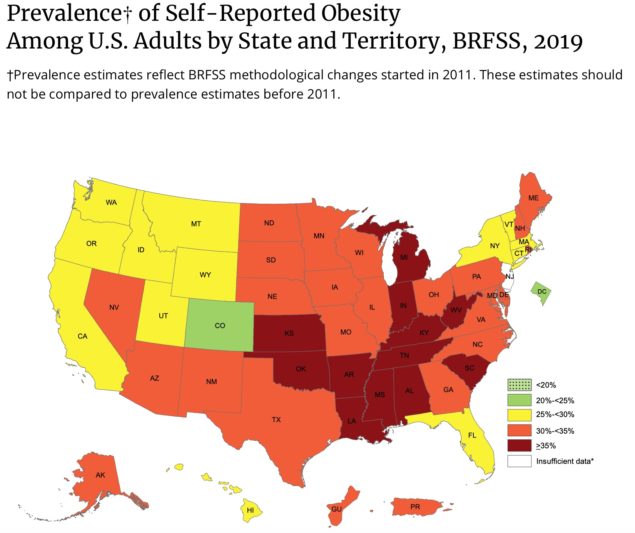


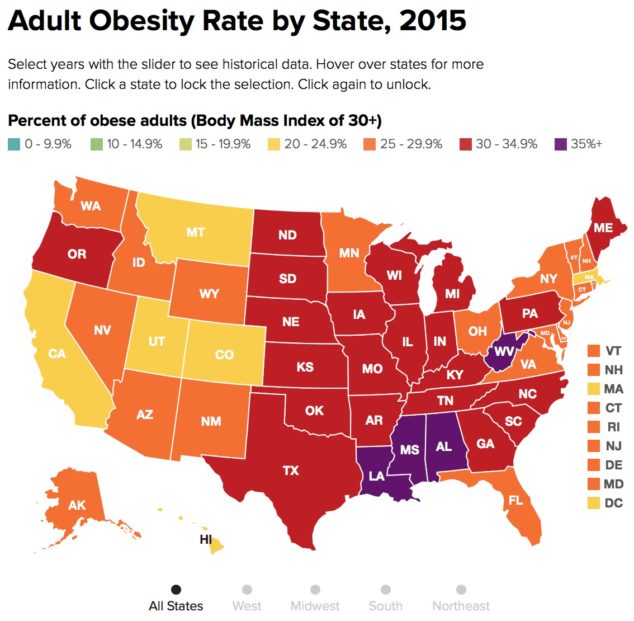

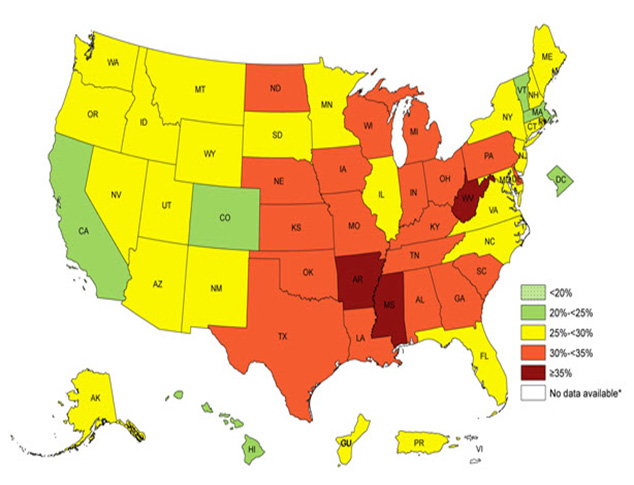
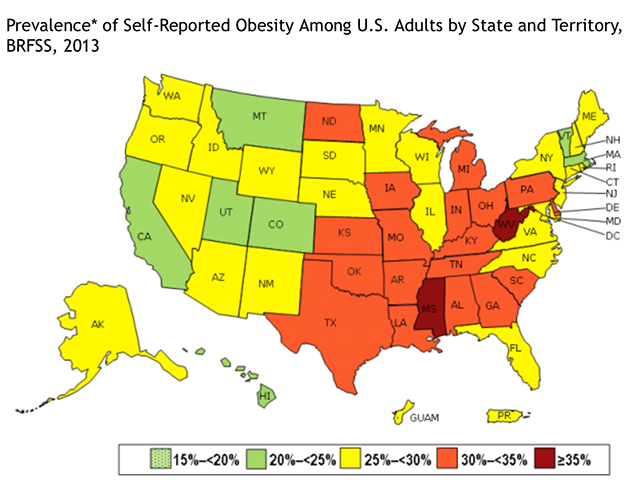
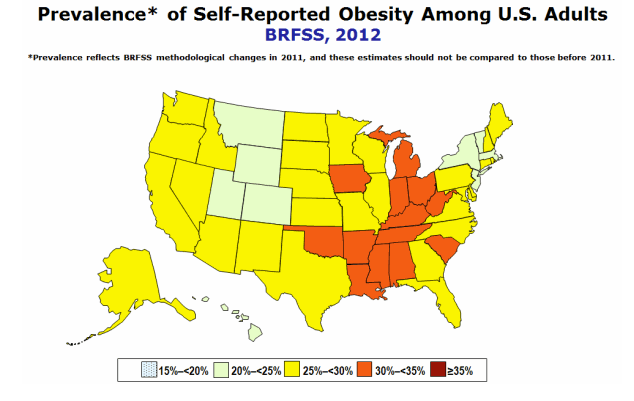
Research published in 2012 by the Trust for America’s Health and the Robert Wood Johnson Foundation provides a report building on state-by-state data from the CDC to project obesity rates. In every state, that rate will reach at least 44 percent by 2030. In 13 states, that number would exceed 60 percent. Their findings also show that the weight increases will also add $66 billion in annual obesity-related medical costs over and above today’s $147 billion to $210 billion. Total U.S. healthcare spending is estimated at $2.7 trillion.
What are some other statistics about the relationship between obesity and cancer?
If you deal with overweight or obesity, choose to change your body and health. Learn more about Cancer Diet, Exercise for Cancer, Inflammation and Cancer, and other integrative solutions, including creating an integrative cancer care plan, team, and self-care strategies.
To track more information, updated research, and other topics, visit Centers for Disease Control and Prevention Overweight & Obesity.





